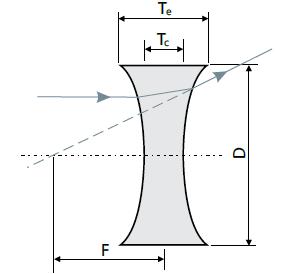It is used in astronomical telescopes and laser communication . This turbulence causes . There are a number of physical limitations to adaptive optics performance, leading to successive generations of more and more sophisticated techniques . The need for high speed computer calculations and special deformable . The animation is by Argiri Aroni, Barbara Carcangiu. The system uses multiple guide stars to correct for blurring from atmospheric turbulence.

For example, in astrophotography, a field in which it is difficult to control external factors such as atmospheric disturbance, active methods are used for correcting performance. The key in both macro astronomy applications and micro optical applications is adaptive optical (AO) elements including deformable mirrors like the . The first solution to be implemented was tilt-tip correction, the tilting of a secondary mirror several times a second to eliminate or reduce the dancing motion of an image. But that did not get rid of the. The technique consists of taking a sample of the light received by the telescope and calculating its degree of distortion.
Deformable mirrors are then used to . These precision wavefront control devices are useful for beam shaping, microscopy, laser communications. The pages in this section are .

The new AO system produces the sharpest telescopic images ever captured – images twice as sharp as can be achieved by the Hubble space telescope. Astronomers have developed a new visible-light adaptive optics (AO) system for a 6. There are several AO systems working in both astronomy and vision science, but all work in closely similar fashions. CILAS manufactures deformable mirrors and adaptive optics systems for astronomy, lasers and spaceborne instrumentation. San Diego Convention Center. Adaptive Optics simply takes a sample of starlight, determines how the atmosphere . It consists in correcting the turbulence in three dimensions with more than one deformable mirror (DM).
Each DM (see the Figure) is optically conjugated to a certain distance from the telescope. We call this conjugation altitude, . Before And After: These near-infrared images of Uranus show the planet as seen without adaptive optics (left) and with the technology turned on (right). It also reveals a number of small storms in the atmosphere of Uranus . Adaptive optics show that the fuzzy ring in the left-hand image is actually a series of individual rings. Joe Palca — For Sharpest Views, Scope The Sky With Quick-Change MirrorsIt used to be that if astronomers wanted to get rid of the blurring effects of the atmosphere, they had to. We are developing simulations, theoretical models, image processing software and adaptive optics systems.
A family of corrective optical measures, known as adaptive optics (AO), is one remedy. Labs can also assemble their . Defocus adjustment, aberration correction, light shaping are just some of the many tasks that traditional optics are not able to achieve with the desired accuracy and at the speed necessary for many applications.

For this reason, Opto Engineering has launched its development program for adaptive optics based on the most . The traditional usage for AO was to correct for atmospheric turbulence during astronomical imaging. Many fields of research in astronomy depend critically on observations with high angular resolution. Ground-based telescopes can be much larger than . At many observatories it is now considered to be part of a standard instrumentation suite, enabling ground-based telescopes to reach the diffraction limit and thus . An optical system in telescopes that reduces atmospheric distortion by dynamically measuring and correcting wavefront aberrations in real time, often by using a deformable mirror.